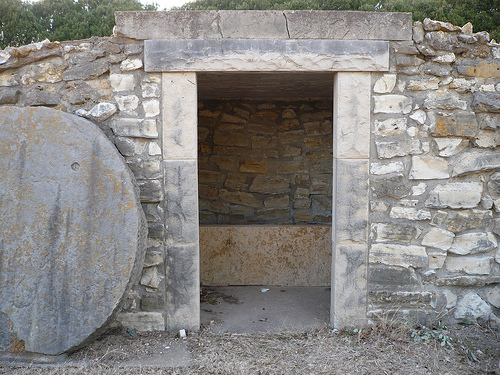
We are again privileged to have a guest post from Kevin Birth, an anthropology professor at Queens College with expertise on the history of time. His other contributions to the ESN blog can be found here and a series on his book “Objects of Time” can be found here. His previous 2016 post on Lent and time is here.
Open up a datebook and day planner, and look at the empty boxes just waiting to be filled. They are all the same size, the same shape, and they convey a sense of time as being made up of containers to be filled. Time management aficionados emphasize scheduling and using those boxes effectively.
It used to be otherwise.
When I first began thinking about pre-clock ideas of time, there was a quote from Isidore of Seville that puzzled me. His definition of the hour goes like this:
Hora enim finis est temporis, sicut et horae sunt fines maris, fluviorum et vestimentorum. (Etymologies book V, chapter 29)
This can be roughly translated as “For the hour is the end point of the time, like the boundaries of the sea, rivers, and vestments.”
This is a definition often repeated in medieval texts. One finds it in Bede, Hrabanus Maurus, and others. It seems to be a commonplace definition of the hour for the educated throughout the Middle Ages.
It is not as mysterious as one might think. It testifies to a view of time as consisting of thresholds to be crossed, not containers to be filled. It emphasizes certain moments/thresholds as particularly meaningful. They serve as dividers between different periods. Crossing them is not moving from one uniform hour to the next, but moving from one state of being to another.
Which brings me to the story of Jesus’ trial and crucifixion. Most modern translations of the texts into English give up on the subtle differences in time sensibilities in favor of a simple translation into modern clock time. Jesus’s being placed on the cross by noon and breathing his last breath at three o’clock is the standard English translation. On the other hand, other indicators of time, such as the cock’s crow or when morning comes are not translated into clock time.
What if one were to consider the passion story in terms of thresholds, not clock times? To cultivate a view of time as thresholds is not merely an indication of when an event happened, but a marker of transformation. Each time indication in the story is a boundary to be crossed.

 )
)This was a component of many forms of medieval daily liturgical cycles. The morning celebrations, lauds and matins, were associated with the Resurrection. Other canonical hours were associated with parts of Jesus’ passion. Terce (mid-morning) was linked to Jesus’ trial, sext (solar noon) with his being nailed to the cross, none (mid-afternoon) with his death, and vespers (twilight) with his burial. In effect, these celebrations framed the day in terms of Jesus’ resurrection, trial, death, and burial.
This stands in contrast to the idea of time inherent in the concept of the “quiet time.” Quiet time discussions are like our datebooks and day planners—they include a subtle idea of time as a container to be filled, and that God should get some of those temporal containers each day.
So we have two different ways of conceptualizing time and daily devotional practices. One is not superior to the other—they are different. They are also not mutually exclusive.
Being an anthropologist, I’m attracted to the use of cultural differences to expand how I think. The medieval practices were meant to encourage daily remembrance of Jesus’ suffering, death, and resurrection. Taking a moment at specific times of day to remember what Jesus went through at that moment is a useful mnemonic for reflecting on our sin and on Jesus’ sacrifice.
Reflecting on moments is a way of punctuating the day. Maybe that’s an appropriate metaphor. The knowledge gained through prayer and study is like the words in a sentence, but the moments of reflection tied to particular times of day, punctuates those words and relates them to our immediate situation. As I write, it is noon, the time when darkness overtook the Earth in the passion story—a time when Jesus was on the cross. I can take this moment and look ahead, beyond the class I’m about to go teach, to recognize the moment of Jesus’ death is half the afternoon ahead of me. As I do this, I come to realize the time I spend daily in contemplating my sinful state is trivial compared to the time Jesus spent on the cross.
But I also think of it as a transformational moment—a moment when due to Jesus’ sacrifice, I’m free of my sin.
In some respects this is like the stations of the cross, but unlike that tradition, it is an exercise that links memory and timing. It is about making the day sacred by punctuating it with reflections on what happened at that part of the day almost 2000 years ago. It transforms an ordinary moment into something else—a divine framing of one’s daily activities.
In the preface to his Morals on the Book of Job, one of the most popular books during the Middle Ages, Pope Gregory the Great complains about the burdens of secular work and how he missed the monastic life. But he also describes prayer as an anchor in the midst of that worldly work. In his time, that included the sort of prayers that punctuate the day I’m discussing. Grabbing these meaningful moments of the day to remember and pray, however briefly, anchors us.
Kevin Birth is a professor of anthropology at Queens College of the City University of New York. He is a specialist in the study of time. His books include Any Time is Trinidad Time: Social Meanings and Temporal Consciousness, and Objects of Time: How Things Shape Temporality and the forthcoming book Time Blind: Problems in Perceiving Other Temporalities.
Andy has worn many hats in his life. He knows this is a dreadfully clichéd notion, but since it is also literally true he uses it anyway. Among his current metaphorical hats: husband of one wife, father of two teenagers, reader of science fiction and science fact, enthusiast of contemporary symphonic music, and chief science officer. Previous metaphorical hats include: comp bio postdoc, molecular biology grad student, InterVarsity chapter president (that one came with a literal hat), music store clerk, house painter, and mosquito trapper. Among his more unique literal hats: British bobby, captain’s hats (of varying levels of authenticity) of several specific vessels, a deerstalker from 221B Baker St, and a railroad engineer’s cap. His monthly Science in Review is drawn from his weekly Science Corner posts — Wednesdays, 8am (Eastern) on the Emerging Scholars Network Blog. His book Faith across the Multiverse is available from Hendrickson.

I like this way of experiencing each day. That helps explain why there’s the prayer book “Book of Hours.” I wonder, is there a tradition of praying through the night? I am writing this from a telescope at 3 AM, and my work often involves night work. I always have an odd sensation when the sun is coming because what it normally seen as fresh start to a new day, I am exhausted and ready to sleep. It is an weird conflict in myself to see the new day and know that I need rest.
I do love Psalm 134:1 encouraging praise all through the night: Come, bless the Lord, all you servants of the Lord, who stand by night in the house of the Lord.
Indeed, what I wrote about is related to the tradition of which the Book of Hours is the current iteration.
In the Christian tradition, prayer at night is associated the office of Nocturns, which is sometimes today called a vigil. This may also be related to the Orthodox Jewish practice of midnight prayer that is devoted to mourning the destruction of the Temple. Since these traditions predate the clock, using the clock notion of “midnight” being 12 AM is not really correct. Jewish teaching is that midnight prayer is a prayer that occurs AFTER the middle of the night. It is also worth considering the Roman divisions of the night in which “intempestum” was a period associated with the middle of the night in which no activity was carried out. The period after intempestum was called “galliculum” for its association with cockcrow (gallus is Latin for chicken)–one of my other ESN blogs talks about cockcrow. In fact, at least the midnight mass associated with Christmas was dubbed the “Missa Gallicantu” (Mass of Cockcrow). In effect, both the Jewish and Christian traditions involve a period of prayer after the midway point of the night, but before first light.
In Anglo-Saxon practice (which was the inspiration for my blog), the psalms associated with Nocturns were 6, 9, 15 and either 16 or 17. These psalms are consistent with the spirit of lament and mourning associated with the Jewish practice (although I think Jewish tradition selects psalm 137), and they strike me as an opportunity for meditation on our short-comings before the coming of the sun and the celebration of the Resurrection, which is tied to the morning office of Matins.